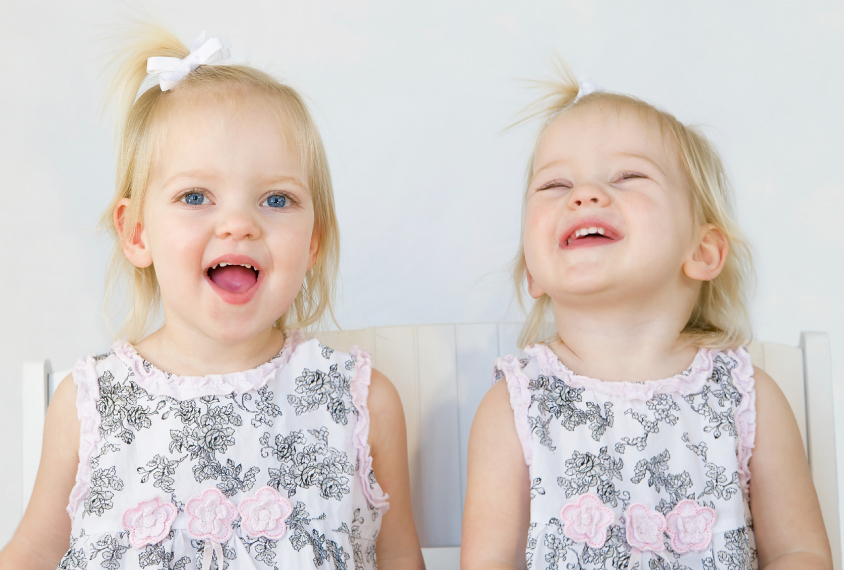
©iStock.com/sonyae
THIS ARTICLE IS MORE THAN FIVE YEARS OLD
This article is more than five years old. Autism research — and science in general — is constantly evolving, so older articles may contain information or theories that have been reevaluated since their original publication date.
Researchers in Sweden are assembling a group of identical twin pairs, with only one twin in each pair having autism. By examining these children literally from tooth to nail, they are finding some intriguing instances of gene-environment interactions.
Studies in twins have shown that autism has genetic origins: A child is more likely to have autism if his or her sibling or twin also has the disorder. But there is also evidence that factors other than genetics, collectively referred to as ‘the environment,’ play a role.
By starting with identical twins, who share the same genes, researchers can tease apart what non-genetic factors might boost the chances of autism.
“Most of the time, people work on genetics separately and then the environment separately, but we really want to put everything together,” says Kristiina Tammimies, principal investigator at the Center of Neurodevelopmental Disorders at the Karolinska Institute in Stockholm, Sweden. Tammimies presented the work Wednesday at the 2015 American Society of Human Genetics Annual Meeting in Baltimore.
Tammimies and her team searched clinical registries in Sweden for identical twins whose records indicate divergent diagnoses of autism or related developmental disorders, such as attention deficit hyperactivity disorder (ADHD). Their work draws primarily from the Child and Adolescent Twin Study in Sweden, in which researchers attempt to interview by phone all twins born in the country after 1992.
So far, the researchers have identified 116 identical twin pairs who are discordant with respect to autism or related disorders and agreed to participate in the study.
Tapping twins:
The commitment for twins and their families involves three days in a clinic. Researchers scan their brains and ask parents to fill out questionnaires designed to rate their children’s autism symptoms. The researchers also collect stool, skin, nails, blood, cerebral spinal fluid and, when possible, a baby tooth, from participants.
So far, the researchers have sequenced all the genes in nine twin pairs who show the most disparate profiles with respect to autism. In one set of twin boys, they have already found intriguing hints from their blood and their teeth for possible contributors to autism.
Even identical twins may have different genetics if one of the two develops spontaneous mutations that crop up during development in only a subset of cells. Surprisingly, the researchers found no evidence of this type of mutation in the nine twin pairs.
However, they did find mutations shared by both members of a twin pair that could contribute to autism risk. For example, one pair of twin boys share a mutation in a gene called CASK that is known to play a role in brain development. The gene is on the X chromosome, so a mutation in it would have a greater effect on the boys, who have only one X chromosome, than it does on their mother, who is known to have passed it to them.
Both boys have some symptoms of autism, according to a diagnostic questionnaire. But one boy is much more severely affected than the other, and only he meets the criteria for an autism and an ADHD diagnosis, according to the researchers.
Interestingly, the boys’ mutation, which disrupts a region that helps splice together the RNA message that codes for protein, can lead to either of two different mutant proteins. The boys may differ in which way the mutation manifests, which might explain their different characteristics.
Tammimies and her colleagues are transforming skin cells from the boys into neurons to see whether a variation in splicing could account for their behavioral and sensory differences.
Metal mystery:
The scientists also found intriguing preliminary evidence of differential exposure to metals from the boys’ teeth. Studies suggest that teeth record a body’s exposure to metals, such as lead and zinc. By dividing teeth into layers, akin to rings on the trunk of a tree, the researchers can infer when during development the children had greater, or lesser, exposure to certain metals.
The results suggest that the boy who has autism was exposed to more lead after birth and lower levels of zinc before birth than his brother. Zinc is necessary for brain development.
This link between metal exposure and autism is speculative, but the researchers have the tools in hand to test their hypothesis, says Tammimies. She plans to look at the effect of zinc levels on developing neurons derived from the boys’ own cells. More broadly, hints from these rare twin pairs may help direct larger studies on how the environment contributes to autism.
“Because we are so controlled from the genome side, we can suggest a hypothesis for the larger population,” says Tammimies.
By joining the discussion, you agree to our privacy policy.